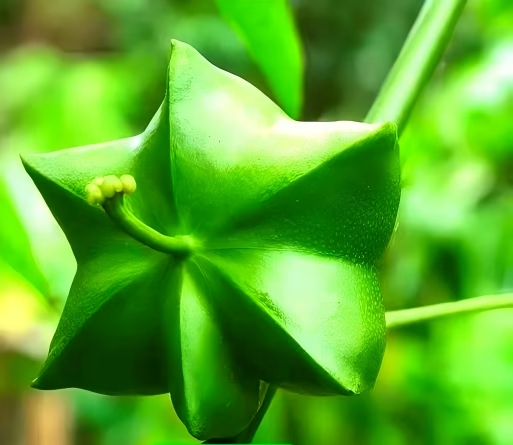Inca inchi, a native South American oil plant, is a popular oilseed plant. The oil extracted from its seeds is called “Inca Inchi Oil.” Because it’s rich in omega-3s, drought- and drought-tolerant, and rarely susceptible to pests and diseases, it’s particularly popular with consumers and growers. But is Inca Inchi Oil really that nutritious? How can you choose it?
Is Inca Inchi Oil really that good?
Inca Inchi is a perennial, climbing, oil-producing plant of the Euphorbiaceae family. It’s native to the Amazon rainforest in Peru, Ecuador, Venezuela, Brazil, and South America at altitudes of 200 to 1,500 meters. Its seeds are rich in protein (approximately 30%) and fat (approximately 50%), and the oil extracted from them is called “Inca Inchi Oil.”
Numerous media reports indicate that over 90% of the oil in inca inchi oil is unsaturated fatty acids, with a staggering 42% being omega-3 polyunsaturated fatty acids. This makes it a new gem in the vegetable oil world.
Many studies have shown that dietary omega-3 fatty acids, rich in antioxidants and anti-inflammatory properties, can reduce depression and help prevent degenerative diseases such as Alzheimer’s, Parkinson’s, and Huntington’s.
Why is it important to consume omega-3 fatty acids?
Lipids are one of the body’s primary sources of energy, providing essential fatty acids for normal physiological function and aiding in the absorption of fat-soluble vitamins. It is recommended to consume vegetable oils rich in unsaturated fats, with polyunsaturated fats being particularly recommended. This is because polyunsaturated fats contain two essential fatty acids, omega-3 and omega-6. Since the body cannot produce them on its own, they must be obtained from food.
Replacing saturated fat with polyunsaturated fats can lower bad cholesterol in the body. Foods rich in omega-3 fatty acids include salmon, tuna, mackerel, saury, eel, egg yolks, walnuts, and flaxseed oil. Omega-6 fatty acids are found in soybean oil, corn oil, and sesame oil.
Omega-3 Fatty Acids
Although over 90% of the oil in inca inchi oil is unsaturated, its omega-3 (linolenic acid) content is similar to that of flaxseed oil. However, its omega-6 content is twice that of flaxseed oil.
Although the body cannot produce two essential fatty acids and must obtain them through food sources, medical professionals generally recommend omega-3 supplementation for the following reasons:
Modern diets often lead to an imbalance in omega-6 and omega-3 intake, often resulting in an excess of omega-6. This can cause inflammation and even lead to chronic diseases.
The optimal ratio of fat intake is “polyunsaturated fatty acids: monounsaturated fatty acids: saturated fatty acids = 1:1.5:0.8.” The ideal ratio of omega-3 to omega-6 is recommended to be 1:1.
Omega-3 fatty acids are divided into three types: ALA, EPA, and DHA.
ALA is typically derived from plant sources such as flaxseed, mustard seeds, and inca inchi. EPA and DHA, on the other hand, come from animal sources, particularly deep-sea fish. EPA and DHA are beneficial to the human body and have anti-inflammatory properties. While the human body can convert ALA into EPA and DHA, the conversion rate is low, approximately 5% and <0.5%, respectively.
Therefore, if you’re looking for a healthy fat to supplement your omega-3 fatty acids, it’s recommended to prioritize animal-based fish oils, followed by plant-based oils such as flaxseed oil.
Overall, inca inchi does have its nutritional benefits, and inca inchi oil is a respectable source of plant-based unsaturated fatty acids. However, it’s important to monitor daily intake. People with chronic conditions like diabetes and kidney disease are advised to consult a physician or nutritionist and consider their intake accordingly.
How can I consume fats and oils healthily?
Reduce/avoid vegetable oils that are high in omega-6s: for example, grapeseed oil, corn germ oil, and sunflower oil.
Increase your intake of foods high in omega-3s: fatty fish rich in DHA/EPA fatty acids (wild salmon, herring, sardines). Use high-quality vegetable oils such as flaxseed oil, hempseed oil, walnut oil, or canola oil.
Oil from the original food source, such as nuts, almonds, seeds, olives, and avocados, are good sources.
What should I pay attention to when choosing inca inchi oil?
Note that the inca inchi plant contains alkaloids that are toxic. Conventional oil extraction and refining techniques cannot completely remove the residue, and residual residue may remain. If consumed carelessly, it may cause abdominal pain, throat choking, or other discomfort. Therefore, homemade oil is not recommended.
Also, look for relevant inspection certification marks. Choose manufacturers with such certifications (for example, SGS or third-party testing for omega-3, 6, 9, and saturated fatty acid content, acid value, peroxide value, total polar compounds, aflatoxin, heavy metals, pesticide residues, and other quality tests as required). They must also comply with food safety regulations such as food traceability systems.
The taste of inca inchi oil is also significantly influenced by the extraction technology used, as well as the cultivation environment and methods used. This requires extensive experimentation to find the product that suits your taste.


Leave a Reply